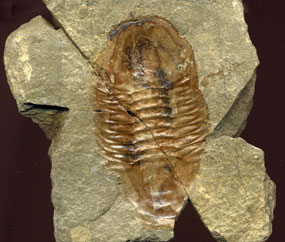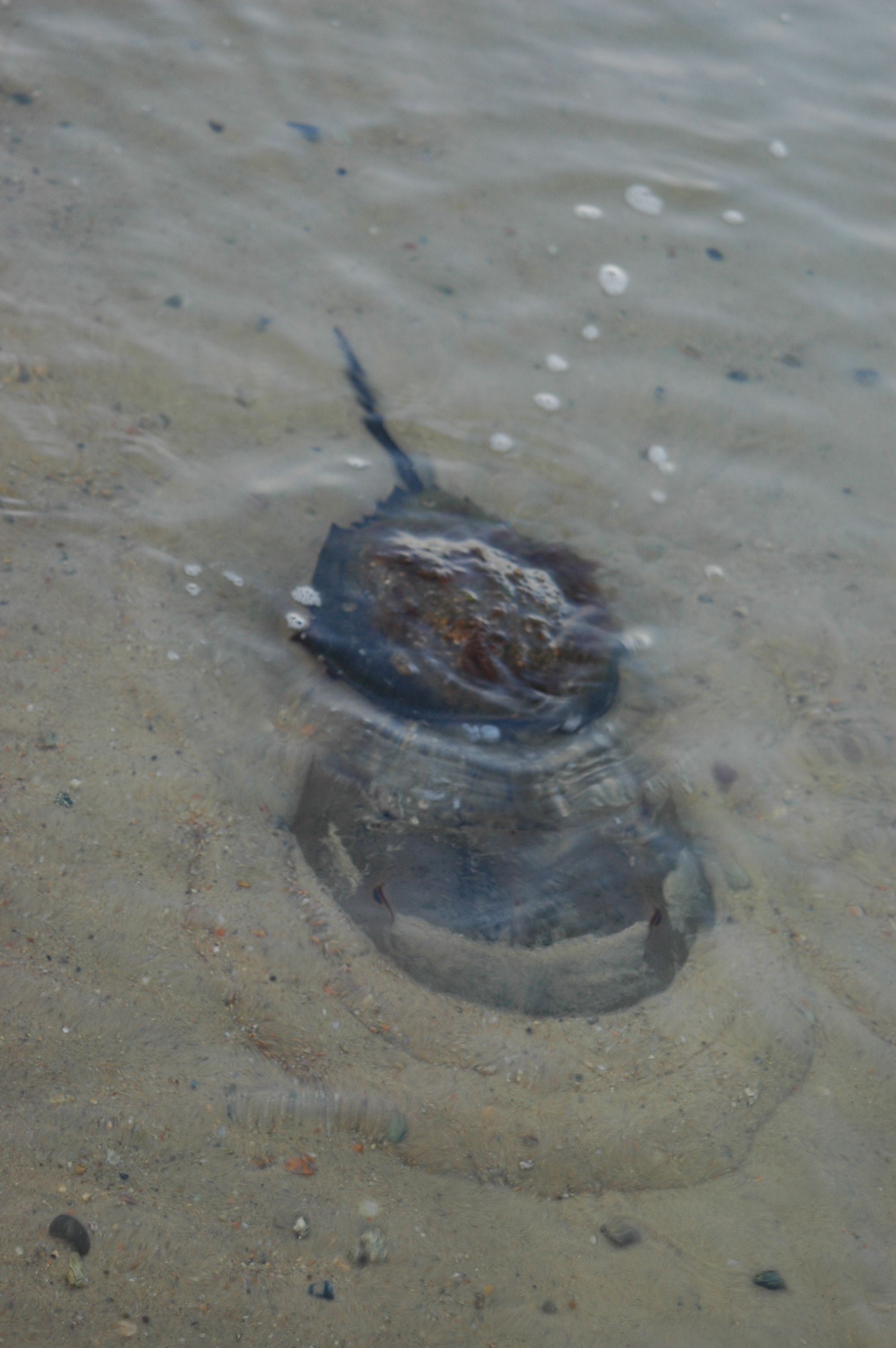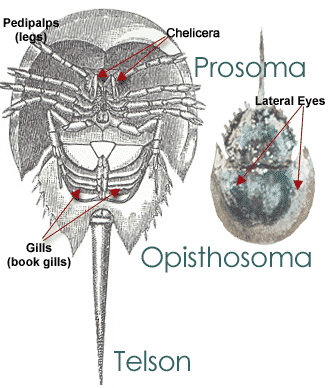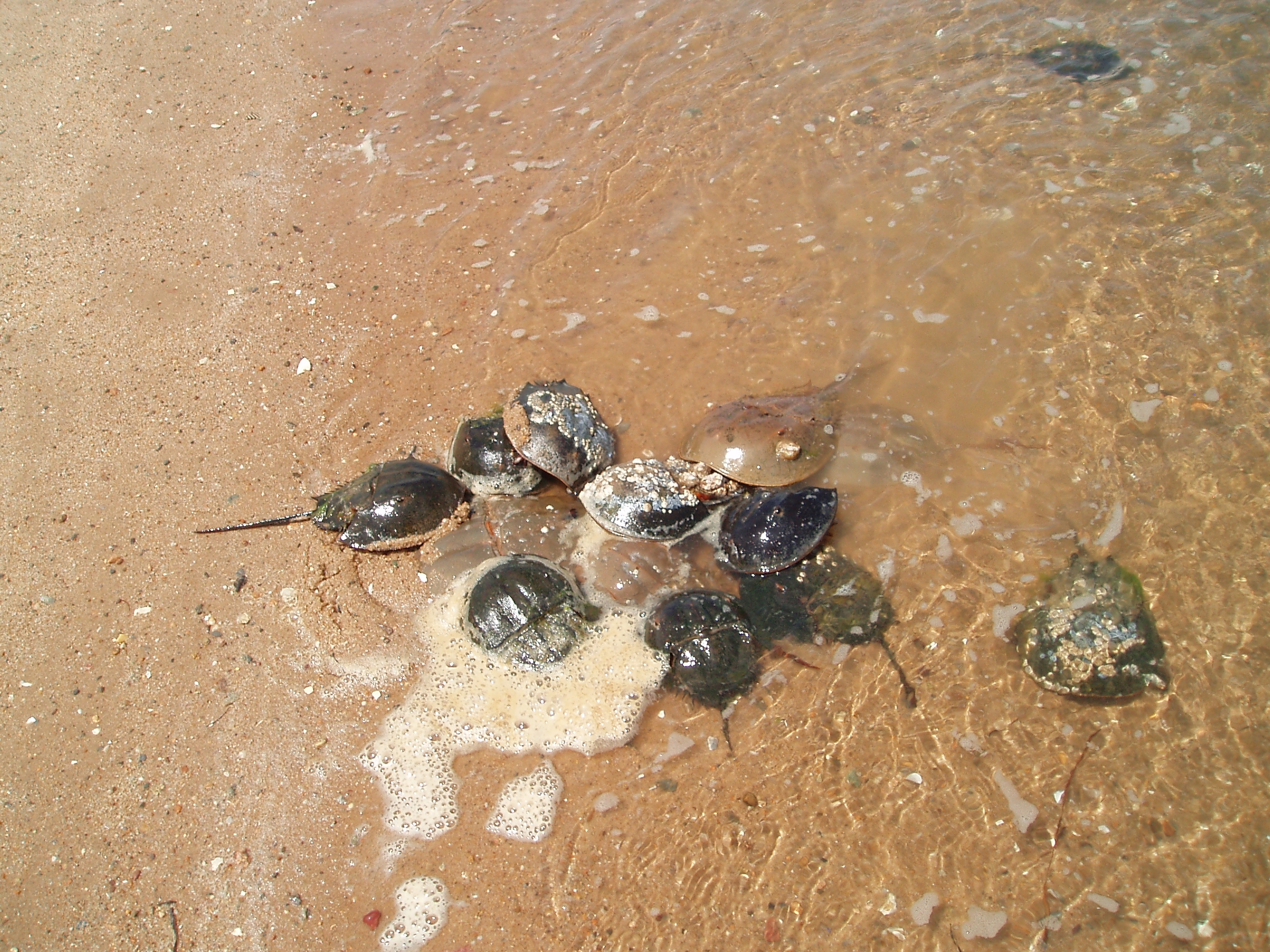What was that Darwin? Are You Talking About Me?
The horseshoe crab is a very unique character! It is a
very old organism that has been around sinc e
the Ordovician period which was close to 500 million years ago!
Many of the horseshoe crab's closest relatives such as the
trilobites and the eurypterids have gone into extinction. So
what makes this organism so special to have survived throughout
millions of years without becoming extinct like the trilobites and other closely related
arthropods during that time?
Horseshoe crabs have been favored because they are known as
ecological
e
the Ordovician period which was close to 500 million years ago!
Many of the horseshoe crab's closest relatives such as the
trilobites and the eurypterids have gone into extinction. So
what makes this organism so special to have survived throughout
millions of years without becoming extinct like the trilobites and other closely related
arthropods during that time?
Horseshoe crabs have been favored because they are known as
ecological
generalists, meaning that they can live in a wide variety of
environments without too much inconvenience.
What makes this organism so successful is that they are not
fixed to one specific habitat. Horseshoe
crabs can endure variations in temperature and salinity.
 Burrowing
is an adaptation that multiple organisms have developed.
The horseshoe crabs are one of the largest organisms that burrow
in sandy environments so that it can lay its eggs in the
sediment. This provides more protection for the eggs
increasing their survival.
Burrowing
is an adaptation that multiple organisms have developed.
The horseshoe crabs are one of the largest organisms that burrow
in sandy environments so that it can lay its eggs in the
sediment. This provides more protection for the eggs
increasing their survival.
Top: A photo of a
fossilized trilobite.
Left: A picture of two horseshoe crabs
burrowing.
Bottom: A group of burrowing horseshoe
crabs.
The embryos and larvae stage of a horseshoe crab's life has a high tolerance to the broad range of salinity levels in the water and harsh conditions of the intertidal habitat. During this stage, it can handle the extreme conditions much better than when it is in its juvenile or adult stage.
Due to its flexibility with its
environment, horseshoe crabs have been able
to make the changes necessary to carry on
through time!
Survival of the horseshoe crabs are also due to the following adaptations:
Chelicerae:
The chelicerae are the first pair of
appendages that have one main job, to place the food into the horseshoe
crab's mouth.
Vision:
Horseshoe crabs have two compound eyes on
the top part of its
shell. These are
its lateral eyes. T hey
are utilized for the sol purpose of finding
mates. There are five more eyes
located on the top, center top of the shell.
Two of the eyes can actually see ultraviolet
light as well as visible light! The
ultraviolet helps them see during
the night! In addition to the seven
eyes already mentioned, there are two more eyes
located underneath
the crab. These eyes help this
organism see through the water when
swimming. Last, but certainly not
least, the horseshoe crab's tail has light
sensors which keep the organism aware of
night and day.
hey
are utilized for the sol purpose of finding
mates. There are five more eyes
located on the top, center top of the shell.
Two of the eyes can actually see ultraviolet
light as well as visible light! The
ultraviolet helps them see during
the night! In addition to the seven
eyes already mentioned, there are two more eyes
located underneath
the crab. These eyes help this
organism see through the water when
swimming. Last, but certainly not
least, the horseshoe crab's tail has light
sensors which keep the organism aware of
night and day.
Above: A close up of one of the two
lateral eyes.
Below: A simple breakdown of the anatomy of
the horseshoe crab
Legs:
A horseshoe crab, in total, have five
pairs of legs! The first eight legs
are utilized for walking around, or in the
case of males, they use these legs to grasp
onto the female horseshoe. The fifth
pair have an extra muscle that allows it to
push itself around the sand without
getting stuck.
of males, they use these legs to grasp
onto the female horseshoe. The fifth
pair have an extra muscle that allows it to
push itself around the sand without
getting stuck.
Book Gills:
The book gills are multitasking organs. When a horseshoe crab goes swimming, the book gills actually propel it through the water. This is where the breathing takes place under water. Oxygen is allowed to pass through but the book gills keeps the water out.
If you would like to learn even more about the anatomy and adaptations of the horseshoe crab visit horseshoecrab.org!
If you would like to learn about the nutrition of the horseshoe crab click here!
To go back to habitat click here.
If you would like to go back to the home page click here.
